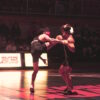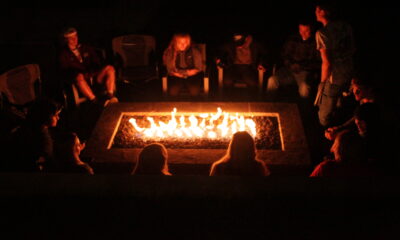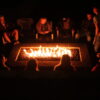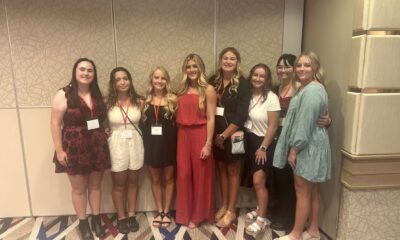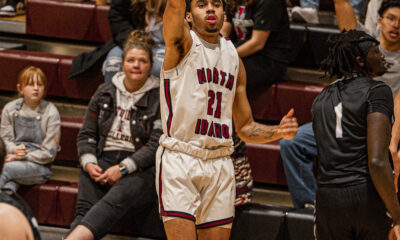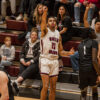Wax on, wax off.
Clad in a black gi—a training uniform—instructor Dale Eberwein casts his gaze over the students of his intermediate kenpo karate class. He is called “Sifu” by his students, a Chinese word meaning “master” or “teacher.”
Mirrors line the walls of Eberwein’s classroom, for “instant feedback.” Students stand in rows before the mirrors, studying their technique in their reflections. Each student is clad in a crisp white gi. Belts of yellow, orange, blue, purple and green are tied around their waists.
“The first rule of karate is self-defense,” Eberwein reminds the class, before beginning the lesson. “As Miyagai-san said, ‘We learn karate so we don’t have to fight.’”
As Eberwein leads his students through a series of drills, the room is filled with the shuffle of bare feet sliding across the floor, and the muffled slaps of hands striking fabric. The students’ eyes are narrowed in concentration.
Before long, Eberwein begins a game of “Sifu Says,” a variation of Simon Says in which students perform various karate moves. They shuffle forward and backward, striking and kicking in response to the magic phrase: “Sifu says . . .”
Frustrated shouts sometimes pierce the air, peppered with profanities—but Eberwein stresses that all kinds of language are permitted in his classroom.
“The only word we don’t allow here is ‘can’t,’” Eberwein says, “because it means you’re unwilling to try.”
Most of Eberwein’s students cite similar reasons for taking kenpo karate: a desire to learn self-defense, or to increase their confidence.
“I’m learning a lot of defense techniques beyond the physical,” says Clint Jensen, 29, general studies, Coeur d’Alene. “Like Sifu says, the best defense is running away. I’m able to learn and teach this, and know that I don’t have to use it.”
Jennifer Edwards, 21, nursing, Bonners Ferry is studying kenpo karate with her sister, Brittany Hayes, 17, dual-enrolled, Bonners.
“[Brittany] always wanted to learn self-defense,” Edwards says, “and at first, I was just the person who took her to class. But I really got into it. It’s more of a family than a class.”
Other students appreciate Eberwein’s approach to teaching kenpo karate: a blend of theory and practical use.
“The class is very intellectually based,” says Tony Aguiar, 25, computer science, Hauser. After five and a half years of study, Aguiar has earned a green belt. “There’s always something new to learn. There’s just something about always challenging yourself to go farther.”
Kenpo karate isn’t just about fighting, however.
“It’s about learning how to control yourself,” says Ruby Smith, 18, biomechanical engineering, Coeur d’Alene. “How to grow as a person and expand your philosophical views.”
Eberwein has taught kenpo karate for 34 years, six of which were at NIC. He first discovered karate while in college, when he was jogging past a dojo and glimpsed a man through the window, moving his limbs through the graceful and powerful arcs of kenpo.
“I was totally enamored by the way he moved,” Eberwein says. “I was hooked.”
Students of kenpo karate, Eberwein says, are “practitioners of principles of motion.” His teaching style involves learning from his students as much as instructing them.
“I care about each of my students like they were my own kids,” Eberwein says. “I make an emotional investment. People cleave to it when they feel like you care about them. It’s the art, not the class, that brings them here. It’s a passion.”





